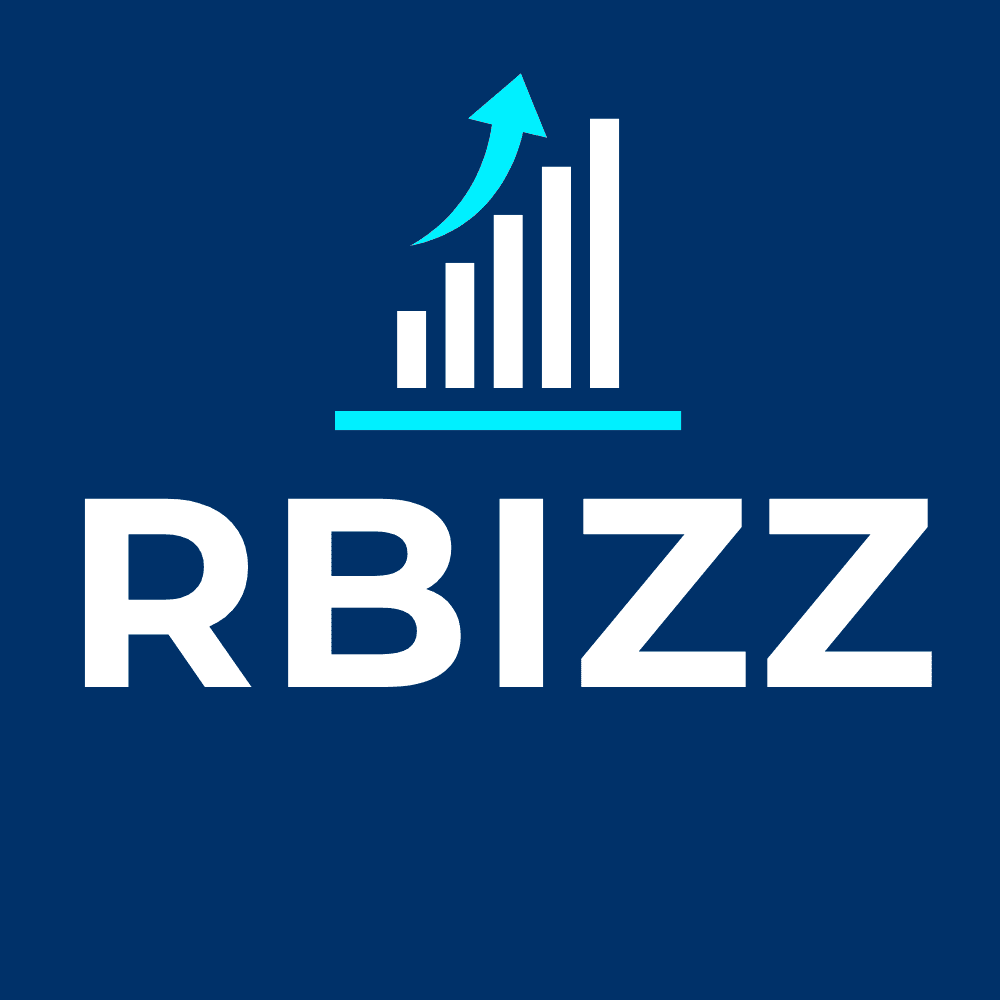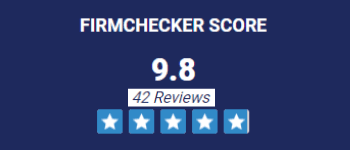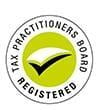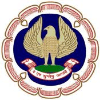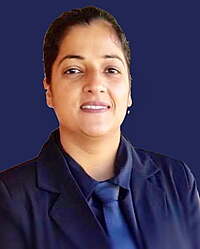Top Self-Managed Super Fund (SMSF) Accountants & Advisors

We Offer SMSF Services Australia-Wide
On This Page You Will Know Answers To The Following SMSF Questions
Q: What services do we offer for SMSF?
Q: How to set-up a Self-Managed Super Fund (SMSF)?
Q: What are the 11 steps in setting-up a SMSF?
Q: What is our process of setting-up SMSF?
Q: What is our process of SMSF Annual Tax Return?
Q: What is our process of SMSF Audit?
Q: How to get a complete guide on setting-up and operating a SMSF?
Q: How much does it cost to set-up a Self-Managed Super Fund (SMSF)?
Q: How much does it cost to run and maintain a Self-Managed Super Fund (SMSF)?
Our Complete Range Of SMSF Accounting Services
We offer a full range of SMSF services to Individual and Non-individual trustees, including:
✔SMSF Set-Up
✔SMSF Set-Up
✔SMSF Accounting
✔SMSF Accounting
✔SMSF Advisory
✔SMSF Advisory
✔SMSF Admin
✔SMSF Admin
Critical Checklist Before Setting-Up SMSF
You must do your homework thoroughly before deciding to set-up a new SMSF. SMSF may not be a right option for everyone. Generally you need to check the following before setting-up a new SMSF:
? Have you taken right advice to see if SMSF is a right option for you?
? Have you understood your legal obligations?
? Have you understood SIS Act and SMSF Rules (as a trustee)?
? Have you talked to an SMSF Advisor and have received Statement of Advice (SOA)?
? Have you decided about individual trustees or corporate trustee?
? Have you formulated an investment strategy?
? Have you understood investment risks and unforeseen circumstances?
? Have you prepared an Exit Strategy?
11 Steps In Setting-Up A SMSF
Our SMSF Processes
Intelligent
Established
Trusted
Super Fast
Our SMSF Setting-Up Process
SMSF Set-Up Process
1. Give your information online.
2. If online information is complete, we will send our tax invoice.
3. If online information is incomplete, we will get in touch for more information or clarification.
4. Upon payment, we will set-up the SMSF with individual or corporate trustee (as instructed).
5. We will send detailed information about the next steps to make SMSF ready for operations.
Our SMSF Tax Return Process
SMSF Tax Return Process
1. Sign-Up online.
2. You will receive an email with a link to an online questionnaire for you to answer relevant questions and give your numbers and documents online.
3. We will review your information and documents for anything missing and may discuss (if needed) for clarification.
4. We will prepare your tax return and send for your review.
5. We will lodge your tax return with ATO once SMSF Independent Audit Report is ready.
Our SMSF Audit Process
SMSF Audit Process
1. Sign-Up online if not yet signed for SMSF tax return.
2. Before getting the SMSF audited by independent SMSF Auditors, we prepare financial reports and tax return of the SMSF following the tax return process detailed above.
3. Financial Reports generally include (depending upon the nature and extent of SMSF operations):
- Balance Sheet
- Profit & Loss Account
- Member Statements
- Investment Statements
- Schedules and Notes to accounts
4. Generally the following events take place during an SMSF audit (SMSF auditors will finalize the actual process depending upon the nature and operations of the Self Managed Super Fund (SMSF):
- Issuing an engagement letter to be signed by both parties
- Checking for a representation letter signed by the trustees
- Verifying that the SMSF is being audited independently
- Auditing the signed financial reports
- Verifying the existence and ownership of the SMSF's assets
- Auditing the asset acquisition
- Auditing the borrowings
- Auditing the loans or financial assistance
- Auditing the annual tax return for the audit year
- Verifying that the fund meets the necessary test(s)
- Checking copy of a signed trust deed
- Checking copy of a signed meeting minutes
- Checking copy of a signed investment strategy
ATO's Guide To Setting-Up A New SMSF (Reproduced)
You can engage self-managed super fund (SMSF) professionals to help you set up and run your fund. You may want to get them involved right from the start since the decisions you make at start-up can affect their ability to help you later on.
If you use an SMSF professional to help you set up your fund, you're still responsible for making sure it's done correctly:
- An accountant can help set up your fund's financial systems and, once you are operating, they can prepare your fund’s accounts and operating statements.
- A fund administrator can assist with administrative tasks during start-up and, afterwards, help you manage the day-to-day running of your fund and meet your reporting and administrative obligations.
- A legal practitioner can prepare and update your fund’s trust deed.
- A financial adviser can help you prepare an investment strategy and advise you about different types of investment and insurance products.The Australian Securities & Investment Commission (ASIC) has information about choosing a financial adviserExternal Link and things to consider before getting robo-adviceExternal Link.
- You'll need an approved SMSF auditor to audit your fund.
- A tax agent can complete and lodge your SMSF annual return, provide tax advice and represent you in your dealings with us. You can check if your tax agent is registeredExternal Link at the Tax Practitioners Board.
How to choose the right SMSF structure for your situation and understand the requirements, cost and penalties.
On this page
- Differences between SMSF trustee structures
- Member and trustee requirements
- Cost
- Ownership of fund assets
- Separation of assets
- Penalties
- Succession
Differences between SMSF trustee structures
You can choose one of the following structures for your fund:
- individual trustees (restrictions may apply, see below)
- a corporate trustee (essentially, a company acting as trustee for the fund).
You should discuss this decision with an SMSF professional.
Member and trustee requirements
Structure | Features |
|---|---|
Individual trustees |
|
Corporate trustee |
|
Structure | Features |
|---|---|
Individual trustees |
|
Corporate trustee |
|
Cost
Structure | Features |
|---|---|
Individual trustees |
|
Corporate trustee |
|
Ownership of fund assets
The title of fund assets must be in the name of the current trustees 'as trustees for' the fund.
Structure | Features |
|---|---|
Individual trustees |
|
Corporate trustee |
|
Separation of assets
The fund's assets must be kept separate from any assets members hold personally.
Structure | Features |
|---|---|
Individual trustees |
|
Corporate trustee |
|
Penalties
Structure | Features |
|---|---|
Individual trustees |
|
Corporate trustee |
|
Succession
Structure | Features |
|---|---|
Individual trustees |
|
Corporate trustee |
|
Once you have considered which structure will be most suitable for your fund, appoint your trustees.
All members of a self-managed super fund (SMSF) must be individual trustees or directors of the corporate trustee. If you are not eligible to be a trustee or director, you cannot be a member of an SMSF.
On this page
- Trustee and director consent
- Ensure members are eligible to be trustees or directors
- Ensure the company can act as a corporate trustee
- What it means to be a trustee or director
- Legal personal representatives
- Trustee declaration
Trustee and director consent
New funds usually appoint trustees or directors under the fund’s trust deed.
You need to ensure that the people who become trustees or directors of the SMSF:
All trustees and directors must:
- consent in writing to their appointment
- sign the Trustee declaration stating they understand their responsibilities (this must be done within 21 days of becoming a trustee or director).
You must keep these documents on file for the life of the SMSF and for 10 years after the SMSF winds up.
We may impose penalties if you don't comply. All trustees and directors are bound by the trust deed and are equally responsible if its rules aren’t followed.
If you want to become a director of a corporate trustee or are already one, you will need a director identification numberExternal Link (director ID). This is a unique identifier that a director will apply for once and keep forever. You can apply for a director ID on Australian Business Registry Services (ABRS) online. When you must apply for your director ID, depends on the date you become a director. You will need to apply for your director ID yourself to verify your identity. No one can apply on your behalf.
Ensure members are eligible to be trustees or directors
All members of the fund must be individual trustees or directors of the corporate trustee, so make sure they're eligible.
Anyone 18 years old or over can be a trustee or director of a super fund so long as they're not under a legal disability (such as mental incapacity) or a disqualified person.
Members under 18 years old can't be a trustee or director. However, a parent, guardian or legal personal representative can be a trustee or director on their behalf.
To knowingly act as a trustee, a trustee director or an office holder of a corporate trustee (such as secretary), while being a disqualified person, is an offence.
To be sure you are not a disqualified person you need to be able to answer no to all of the following questions.
Checklist | Yes or No |
|---|---|
Have you ever been convicted of a dishonest offence, in any state, territory or a foreign country? Offences of a dishonest conduct are things such as fraud, theft, illegal activity or dealings. These convictions are for offences that occurred at any time, including convictions that have been ‘spent’ and those that the court has not recorded, due to age or first offender. | Yes or No |
Have you ever been issued with a civil penalty order? Civil penalty orders are imposed when an individual contravenes a civil penalty provision, this can be an order to pay a fine or serve jail time. | Yes or No |
Are you currently bankrupt or insolvent under administration? You cannot be a trustee of an SMSF while you are an undischarged bankrupt, you cannot remain a trustee if you become bankrupt or insolvent after you are appointed. | Yes or No |
Have you been previously disqualified by the ATO or APRA? The commissioner of taxation as regulator can disqualify a trustee, this disqualification is permanent and is not just specific to the SMSF you were a trustee of at the time. The Federal Court can make an order to disqualify a trustee of an APRA fund. This is permanent and this disqualification does not allow you to operate an SMSF. | Yes or No |
Applying to waive disqualified status
You can apply for a waiver of disqualified status if the offence leading to the disqualification was not an offence involving serious dishonest conduct. This means that the penalty imposed for the offence was not either a:
- term of imprisonment for more than two years
- fine of more than 120 penalty units.
The application must be in writing. It must include:
- details of the offence
- court documents about the offence
- consent for us to inquire about the offence to any law enforcement agencies or courts that we think are relevant.
The application should be made within 14 days of the conviction. We will accept applications after this time if you explain the circumstances of your late application.
You cannot become a trustee until we notify you of our acceptance to waive the disqualified status.
Send your signed application and supporting documents to:
PO Box 3100
Penrith NSW 2740
You can check our disqualified trustees registerExternal Link to see if an individual has previously been disqualified by us. The register:
- provides information already publicly available in the Government Notices GazetteExternal Link. It has functionality to help you search easily and determine if a potential trustee has been disqualified.
- is updated quarterly
- includes all individuals who have been disqualified by us since 2012 (when this information was first published electronically).
Ensure the company can act as a corporate trustee
A company cannot act as a corporate trustee of a superannuation entity, including an SMSF if certain events occur. This can include if:
- the company is aware or has reasonable grounds to suspect that a person who is, or is acting as, a responsible officer of the company is a disqualified person
- an administrator has been appointed in respect of the company
- the company has been deregistered by ASIC
- a receiver, or a receiver and manager, has been appointed in respect of property beneficially owned by the company
- a provisional liquidator or restructuring practitioner in respect of the company has been appointed
- action has started to wind up the company.
What it means to be a trustee or director
Whether you're a trustee or director of a corporate trustee, you are responsible for running the fund and making decisions that affect the retirement interests of each fund member, including yourself.
As a trustee or director, you must:
- act honestly in all matters concerning the fund
- act in the best interests of all fund members when you make decisions
- manage the fund separately from your own superannuation affairs
- know, understand and meet your responsibilities and obligations
- ensure that the SMSF complies with the laws that apply to it.
All trustees and directors are equally responsible for managing the fund and making decisions. You are responsible for decisions made by other trustees, even if you're not actively involved in making the decision.
You can appoint other people to help you or provide services to your fund (for example, an accountant, administrator, tax agent or financial planner). However, the ultimate responsibility and accountability for the SMSF’s actions lie with you, as trustee or director.
As an individual trustee or director of a corporate trustee, you may be personally liable to pay an administrative penalty if certain laws relating to SMSFs are not followed.
Other members of the fund can take action against you if you don't follow the terms of the trust deed. Any fund member who suffers loss or damage because of a breach of any trustee duties may sue any person involved in the breach.
For more information, see:
Legal personal representatives
A legal personal representative can be:
- the executor of the will or the administrator of the estate of a deceased person
- the trustee of the estate of a person under a legal disability or a minor
- a person who holds enduring power of attorney to act on behalf of another person (see also SMSF ruling 2010/2).
A legal personal representative can act as a trustee or director of a corporate trustee, on behalf of:
- a deceased member, until the death benefit becomes payable
- a member under a legal disability
- a minor (a parent or guardian can also act as a trustee on behalf of a minor).
A legal personal representative can't act as a trustee on behalf of a disqualified person, such as an undischarged bankrupt.
A legal personal representative does not include a registered tax agent or an accountant unless they meet the definition above.
Trustee declaration
The Trustee declaration is signed by trustees and directors of a corporate trustee of an SMSF to declare they understand their obligations and responsibilities.
How to obtain this form
For more information and to download the form see Trustee declaration.
Who should complete this declaration
You must complete this declaration if you become a trustee or the director of a corporate trustee of a new SMSF or of an existing SMSF.
This declaration must be signed within 21 days of becoming a trustee or director.
A separate declaration is required to be completed and signed by each and every trustee or director.
You must also complete this declaration if you:
- have undertaken an ATO approved course of education to comply with an education direction
- are a legal personal representative who has been appointed as a trustee or director on behalf of a:
- member who is under a legal disability (usually a member under 18 years old)
- member for whom you hold an enduring power of attorney
- deceased member.
A trust is an arrangement where a person or company (the trustee) holds assets (trust property) in trust for the benefit of others (the beneficiaries). A super fund is a special type of trust, set up and maintained for the sole purpose of providing retirement benefits to its members (the beneficiaries).
To create a trust, you need:
- trustees or directors of a corporate trustee
- governing rules (a trust deed)
- assets (an initial nominal consideration to give legal effect to the trust can be used, for example, $10 attached to the trust deed)
- identifiable beneficiaries (members).
Trust deed
A trust deed is a legal document that sets out the rules for establishing and operating your fund. It includes such things as the fund’s objectives, who can be a member and whether benefits can be paid as a lump sum or income stream. The trust deed and super laws together form the fund’s governing rules.
The trust deed must be:
- prepared by someone competent to do so as it's a legal document
- signed and dated by all trustees
- properly executed according to state or territory laws
- regularly reviewed, and updated as necessary.
Assets
To establish your fund, assets must be set aside for the benefit of members.
If a rollover, transfer or contribution is expected in the near future, a nominal amount (for example, $10) can be held with the trust deed. This amount is regarded as a contribution and must be allocated to a member.
If a member can't contribute to the SMSF (for example, they are over 65 or don't meet the work test), an administrative discretion is automatically applied to allow a nominal contribution for the member. The amount must be allocated to the member, solely for the purpose of registering the SMSF.
Your SMSF needs to be a resident regulated super fund at all times during the financial year to receive tax concessions.
On this page
Fund residency conditions
An SMSF is an Australian super fund if it meets all 3 of these residency conditions:
- The fund was established in Australia, or at least one of its assets is located in Australia.
- The fund was 'established in Australia' if the initial contribution to establish the fund was paid and accepted in Australia.
- The central management and control of the fund is ordinarily in Australia.
- This means the SMSF's strategic decisions are regularly made, and high-level duties and activities are performed, in Australia. It includes
- formulating the investment strategy of the fund
- reviewing the performance of the fund's investments
- formulating a strategy for the prudential management of any reserves, and
- determining how assets are to be used for member benefits.
- In general, your fund will still meet this requirement even if its central management and control is temporarily outside Australia for up to 2 years. If central management and control of the fund is permanently outside Australia for any period, it will not meet this requirement.
- This means the SMSF's strategic decisions are regularly made, and high-level duties and activities are performed, in Australia. It includes
- The fund either has no active members or it has active members who are Australian residents and who hold at least 50% of either
- the total market value of the fund's assets attributable to super interests, or
- the sum of the amounts that would be payable to active members if they decided to leave the fund.
What to do if members go overseas
If members are planning to go overseas for an extended period, get professional advice about maintaining the residency status of your SMSF.
If a member of your fund becomes a non-resident but still wishes to make or receive contributions, they should do this outside their SMSF, for example through a retail or industry super fund. They can then rollover the contributions to their SMSF when they return as an Australian resident.
If your SMSF fails the residency test, you should roll over your funds to a resident regulated super fund and wind up the SMSF. Otherwise the fund will become non-complying.
More guidance can be found in, TR 2008/9Income tax: meaning of 'Australian superannuation fund' in subsection 295-95(2)of the Income Tax Assessment Act 1997.
To register your SMSF, see Register your fund and get an ABN.
When your fund is established and all trustees have been appointed (including signing the Trustee declaration), you have 60 days to register the SMSF with us by applying for an Australian business number (ABN).
Register your SMSF and apply for an ABNWhen completing the ABN application, you should:
- ask for a tax file number (TFN) for your fund
- elect for your fund to be an ATO-regulated SMSF. If you don't, your fund will not receive tax concessions and the members’ employers can't claim deductions for contributions
- register for GST (if necessary).
Two common errors in applications to register an SMSF and get an ABN are:
- the SMSF trust is not set up correctly before applying for an ABN, including setting aside an asset as the SMSF's property
- the details of the members, trustees or directors of the corporate trustee are incorrect or incomplete.
To avoid common mistakes, refer to:
- Create the trust and trust deed – offers information about setting up a fund
- Associate details – outlines the information you'll be asked for
- Eligibility to register and get an ABN
- What you need for your registration and ABN application
On this page
- Registrations by tax professionals
- Eligibility to register and get an ABN
- What you need for your registration and ABN application
- Registering for GST
- Check your registration status
- Registration application delays
Registrations by tax professionals
Tax professionals can use the Australian Business Register's tax professional's services to register SMSFs and apply for an ABNExternal Link on behalf of their clients.
Eligibility to register and get an ABN
Registering your SMSF isn't the first step in setting up an SMSF.
Before you register, you must already have:
- considered appointing professionals to help you
- chosen individual trustees or a corporate trustee
- in the case of a corporate trustee
- created the trustee company, or
- ensured that the pre-existing company you have chosen is eligible to act as corporate trustee
- appointed trustees or directors of the corporate trustee
- created a trust (including transferring an asset to the trust)
- checked that your fund is an Australian super fund
- ensured the company can act as a corporate trustee.
Once you have completed these steps then you are ready to register. Obtaining an ABN is part of the registration process.
See also
What you need for your registration and ABN application
The SMSF registration and ABN application form is easier to complete if you have the right information at hand when you apply.
Previous ABN or TFN
You will be asked if the entity you are registering:
- currently has or previously held an ABN
- wants to apply for an ABN
- has a TFN
- wants to apply for a TFN.
New SMSF applicants will not have an existing ABN or TFN and must apply for both to be registered as an SMSF.
If the SMSF previously held an ABN and it was cancelled in error, call us on 13 10 20 if you want it to be reinstated.
Type of fund
Question | SMSFs must answer |
|---|---|
For taxation purposes which type of entity is the applicant? | Superannuation entity |
What type of organisation is the applicant? | An ATO Regulated Self-Managed Superannuation Fund |
What type of fund is the applicant? | Do not answer (leave blank) |
If the fund is a trust or government organisation, what tier of government does it belong to? | Do not answer (leave blank) |
What is the structure of the superannuation entity? | Accumulation fund (Note: On or after 1 July 2006, new SMSFs must be registered as accumulation funds. Defined benefit funds were only available for a fund that was established before 1 July 2006). |
Resident status
An entity must be an Australian super fund in order to be an SMSF.
Tax agent's details
If you are using the services of a tax agent, you can provide their registration number. You can get their registration number:
- by asking them
- from a tax return that they have prepared for you
- on an invoice they have given you.
Recording your tax agent’s number against your ABN will enable them to undertake work on your behalf.
Name of SMSF
The name of the SMSF that you put on the registration form must be the name that you used when you created the fund's trust deed.
We will check that you are able to use that name; if the name that you choose has already been used for an SMSF it may delay processing your registration and ABN application. You can check whether your SMSF's name has been used previously at Super Fund LookupExternal Link.
Date SMSF came into existence
The SMSF came into existence on the date that you created the trust.
SMSF business details
You'll need to provide at least one business address for your SMSF. For each address you'll be asked for the:
- street address
- phone and email contacts
- business activity details.
The business location that you provide could be the home address of one of the trustees or the office of a professional that assists with the administration of the SMSF on an ongoing basis.
Electronic fund transfer details
Your SMSF must have a bank account in the name of the fund for your SMSF members’ super payments (such as rollovers and contributions) to be paid into. It also needs to have a bank account for tax refunds, this can be the SMSFs bank account or your Tax Agent’s bank account, see Set up a bank account.
Provide your SMSFs bank account
Once you have your SMSFs bank account, you must provide the details to us by using:
- Online services for business
- your registered agent
- phone us on 13 10 20.
For more information, see Notify us of changes.
Electronic service address alias
You can provide your SMSFs electronic service address (ESA) alias when you register for an ABN.
Your SMSF needs a registered ESA:
- to receive non-related employer contributions
- make electronic release authorities
- for members to rollover super to and from your SMSF.
For electronic release authorities and rollovers, the ESA needs to be SuperStream enabled.
For more information, see register of SMSF messaging providers who can give you an ESA.
To avoid delays you must register with an ESA provider and provide us with your SMSF's ESA before contributions, electronic release authorities or rollovers can be received by your SMSF.
Authorised contact details
You must nominate at least one authorised contact.
Associate details
The associates of an SMSF are the:
- individual trustees
- corporate trustee
- members
- directors of a corporate trustee.
For all your associates, you'll need to provide:
- for individuals – their name, date of birth, position held and either their tax file number (TFN) or residential address
- for organisations – their legal name, ACN/ARBN/ABN if applicable, and either their TFN or address and date of formation.
We'll use these details to identify your associates in our existing records. If we can't identify or exactly match details of an associate, your registration and ABN application will be delayed or refused.
Election to be regulated
To register as an SMSF, you need to formally elect for the fund to be regulated by us.
Registering for GST
Most SMSFs don't need to register for GST because SMSFs mainly make input-taxed sales, and these don't count towards GST turnover.
SMSFs with an annual GST turnover of more than $75,000 must register for GST. Annual GST turnover doesn't include:
- contributions
- interest and dividends
- residential rent or income generated outside Australia.
However, it does include gross income from the lease of equipment or commercial property.
Check your registration status
Your fund’s details will be included in ABN lookupExternal Link and Super Fund LookupExternal Link.
ABN lookup
ABN lookup shows the status of your ABN. Your SMSF will appear on ABN lookup once it has an ABN after your application has been processed and your SMSF is registered.
You need to properly document contributions and rollovers, including the amount, type and breakdown of components, and allocate them to the members’ accounts within 28 days of the end of the month in which you received them.
From 1 October 2021, to rollover any super to or from your SMSF, you will need to use SuperStream.
Find out about
You need to manage your fund’s investments in the best financial interests of fund members and in accordance with the law. You also need to ensure that you separate your fund's investments from the personal and business affairs of fund members, including your own.
Visit our ATO CommunityExternal Link to ask a question and read moderated answers about investing.
Find out about:
See also:
The most common types of assessable income for complying SMSFs are assessable contributions, net capital gains, interest, dividends and rent.
Find out more:
Generally your SMSF can only pay a member's super benefits when the member reaches their ‘preservation age’ and meets one of the conditions of release, such as retirement. The payment may be an income stream (pension) or a lump sum, depending on the circumstances.
Find out about:
- Preservation of super
- Conditions of release
- Innovative retirement income stream products
- Death of a member
- Lump sums and super income streams (pensions)
Payments of benefits to members that have not met a condition of release are not treated as super benefits – instead, they will be taxed as ordinary income at the member's marginal tax rate. If a benefit is unlawfully released, we may apply significant penalties to you, your SMSF and the recipient of the early release.
Note that the operating standards, investment restrictions and other rules and regulations that apply to SMSFs in the accumulation or growth phase, continue to apply when members begin receiving a pension from the SMSF.
How to wind up your SMSF, including dealing with members' benefits and finalising your reporting responsibilities.
On this page
Reasons to wind up a fund
At some point, you may need to wind up your self-managed super fund (SMSF), so it's useful to plan early.
It’s important to wind up your fund correctly, if you don’t meet all your obligations you may incur penalties. There are some key tasks you need to perform, such as dealing with members' benefits and finalising your reporting responsibilities.
The content on this page is also available in our ‘Winding up an SMSF’ publication. Download Winding up a self-managed super fund (PDF, NAT 75417, 860KB)This link will download a file. It helps you understand the steps you need to take to correctly wind up your SMSF.
There are varied reasons why trustees may decide to wind up their SMSF which often come about due to a change in circumstances, such as:
- death of a trustee
- disability or illness, resulting in the trustees being incapable of running an SMSF
- a lack of time to manage the SMSF
- your fund is unable to meet ongoing costs
- all members want to leave the fund.
The breakdown of a relationship between one or more members of your SMSF may affect the ability of a member to effectively undertake their trustee/member obligations.
If a member chooses to leave your SMSF due to a relationship breakdown, their benefits must be rolled over to another complying super fund. Your SMSF does not have to be wound up, but it may need to be restructured to continue to meet the definition of an SMSF.
Before exit planning or winding up, you should consider appointing professionals to assist you. Even if you use a professional to help you, it is still your responsibility to ensure the SMSF successfully winds up.
Exit plan
It's important for all funds to have an exit plan in place even if you're not ready to wind up now, as this will make it easier when the time does come.
Your plan should consider all the circumstances of your members and be signed off by all trustees. You should also keep this plan with the fund's records.
When developing your exit plan you should consider:
- how to deal with members benefits upon their death
- appointing an enduring power of attorney
- estimated costs of winding up
- liquidity of funds' assets
- being SuperStream ready to enable roll out of benefits
- who will keep copies of the fund's records and transactions.
Make sure you review your exit plan regularly, assess your fund and each member's circumstances to decide if an SMSF is still right for you. You may want to speak with an SMSF professional to help you decide.
Winding up your fund
There are some key tasks you need to complete in order to wind up your fund properly:
- Review the checklist found in the 'Winding up an SMSF' publication.
- Check your trust deed to understand requirements that it specifies about winding up the fund.
- Get written agreement by organising a meeting with all trustees to ensure everyone agrees with the decision. Keep minutes and get every trustee to sign the agreement to wind up.
- Sell or dispose of all the fund's assets. Ensure you deal with all assets in accordance with the super laws and trust deed.
- Finalise outstanding tax and compliance obligations, including
- transfer balance account report (TBAR): if you were paying any members an income stream you must cease it before winding up and lodge your final TBAR with us as soon as possible
- pay as you go (PAYG) payment summary: if you paid benefits to members, or a lump sum to a deceased estate even if you didn’t withhold tax, you may need to issue a PAYG payment summary (if the benefits paid are not assessable income and not exempt income, then no withholding tax or a payment summary is required).
- Pay outstanding expenses and tax liabilities.
- These may include
- final invoices
- expenses due to asset sales
- outstanding tax liabilities (such as PAYG instalments and PAYG withholding).
- Log in to Online services for business or contact us or your tax professional to find out the balance of accounts we hold for your fund. Request refunds if they are due. You can't close your fund if there are credit or debit balances remaining on the accounts.
- If you receive a refund that you are not eligible to access, ensure you roll it over using SuperStream immediately after receiving it and before we cancel the fund's Australian business number (ABN). Trustees can rely on the valid response received from the SMSFmemberTICK service when they rolled over the member's benefits.
- These may include
- Calculate and distribute member benefits. How you distribute benefits will depend on if they are a member and if they meet a condition of release.
- If they are a member and meet a condition of release, you can pay them their benefits.
- If they are a member and do not meet a condition of release, you must roll over their benefits to another complying super fund. To make a rollover you need to use SuperStream.
- You can pay benefits to someone other than a member, in the event of that members death. There are additional checks you need to make when paying benefits due to the death of a member.
- Make sure you leave enough money in the SMSF to pay amounts outstanding after you lodged your annual return, such as audit fees and tax expenses.
- Appoint an SMSF auditor to complete the final audit. You must do this before lodging your final return.
- Complete and lodge all outstanding SMSF annual returns and the fund's final return. Answer all sections relevant to the fund’s wind up to let us know it's your final return and we will adjust your SMSF supervisory levy.
- Notify third parties that your fund is winding up.
- These may include
- employers making contributions to your fund
- SMSF professionals.
- If your fund has a corporate trustee structure and the corporate trustee was only set up for the purposes of the SMSF, you need to notify ASIC that the company needs to be deregistered.
- These may include
- Close your fund's bank account. First ensure:
- expected liabilities have been settled
- refunds have been received
- you have completed rollovers using SuperStream
- you have received confirmation from us that your fund has been wound up.
Note: If you need help winding up your fund or preparing a plan to wind up your fund, you can contact a professional to help.
After winding up
Once a fund is wound up, it can’t be reactivated.
By completing and lodging your final SMSF annual return, you have informed us that the fund is winding up. You don't have to write to us in order to wind up your SMSF.
Don't cancel the fund's ABN. Once we have processed your annual return we will confirm your fund has been wound up by sending you a letter stating we have:
- cancelled the fund's ABN
- closed your SMSF records on our system.
As a trustee you have a number of administrative obligations. You need to:
- appoint an SMSF auditor
- value the fund's assets
- lodge SMSF annual returns
- report transfer balance cap events
- lodge Superannuation transfer balance account reports
- keep records
- notify us of changes.
You should also regularly check your SMSF registration status.
Approved self-managed super fund (SMSF) auditors have a critical role in helping to maintain the health and integrity of the SMSF sector through the annual audit of each SMSF.
Find out about:
These guides help you at various stages of the self-managed super fund (SMSF) lifecycle. They only contain key points of what you need to know. For more detailed information, always refer to the web content.
On this page
- Starting a self-managed super fund
- Running a self-managed super fund
- Winding up a self-managed super fund
Starting a self-managed super fund
The Starting a self-managed super fund (PDF, NAT 75397, 1,643KB)This link will download a file publication helps you consider if an SMSF is right for you. It includes:
- what is an SMSF
- choosing a structure
- an outline of your obligations
- registering your SMSF
- getting professional advice.
The content in this publication can also be found in thinking about self-managed super and setting up.
Running a self-managed super fund
We are currently developing the Running a self-managed super fund publication. It will be available here once it is completed.
The content in the publication can also be found in contributions and rollovers, investing, paying benefits and administering and reporting.
Winding up a self-managed super fund
The Winding up a self-managed super fund (PDF, NAT 75417, 860KB)This link will download a file publication helps you prepare for when you decide to wind up your SMSF. It includes:
- common situations where you may consider winding up
- preparing your exit plan
- how to correctly wind up your SMSF
- getting professional advice.
The content in this publication can also be found in winding up.
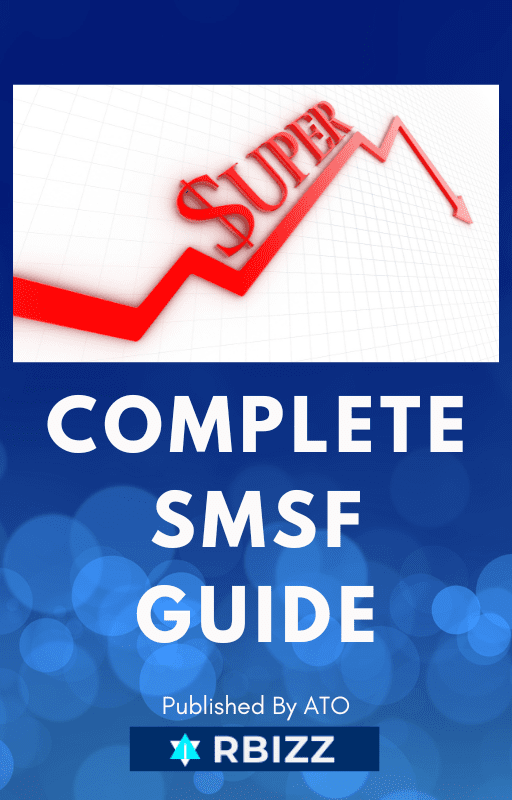
GET FREE COPY OF COMPLETE SMSF GUIDE
- Planning
- Setting-up
- Contributions & Rollovers
- Investing
- Paying Benefits
- Winding Up
- Administering & Reporting
- Audit
- Resources
Our Prices
Fixed
Genuine
Affordable
New SMSF Set-Up Prices?
New SMSF Set-Up Prices?
SMSF Set-Up Prices
All prices are including GST
SMSF Compliance Prices?
SMSF Compliance Prices?
SMSF Accounting & Tax Returns Prices
All prices are including GST
FAQs
Please check knowledge base at our support portal for all frequently asked questions under the category 'non-business tax return for individuals'.
